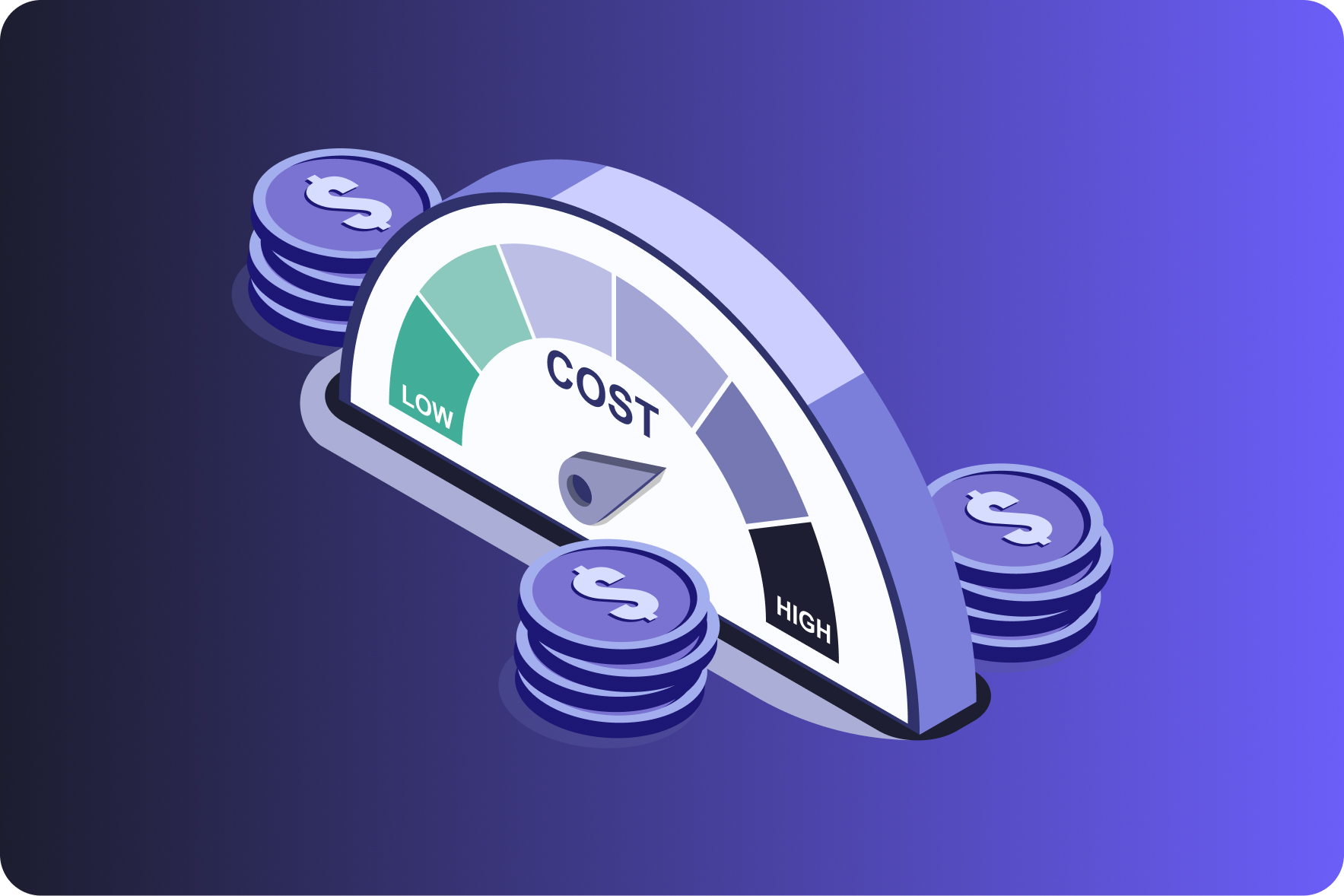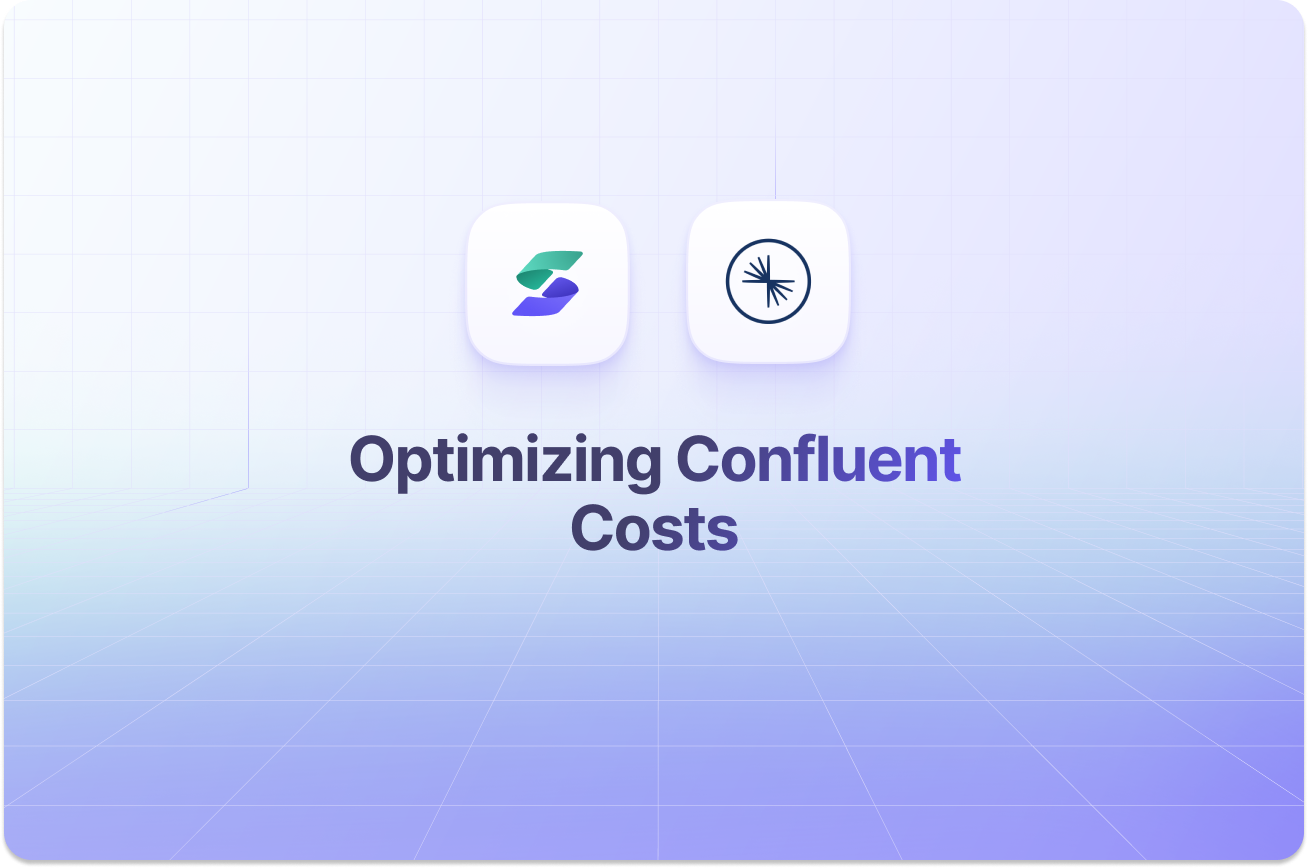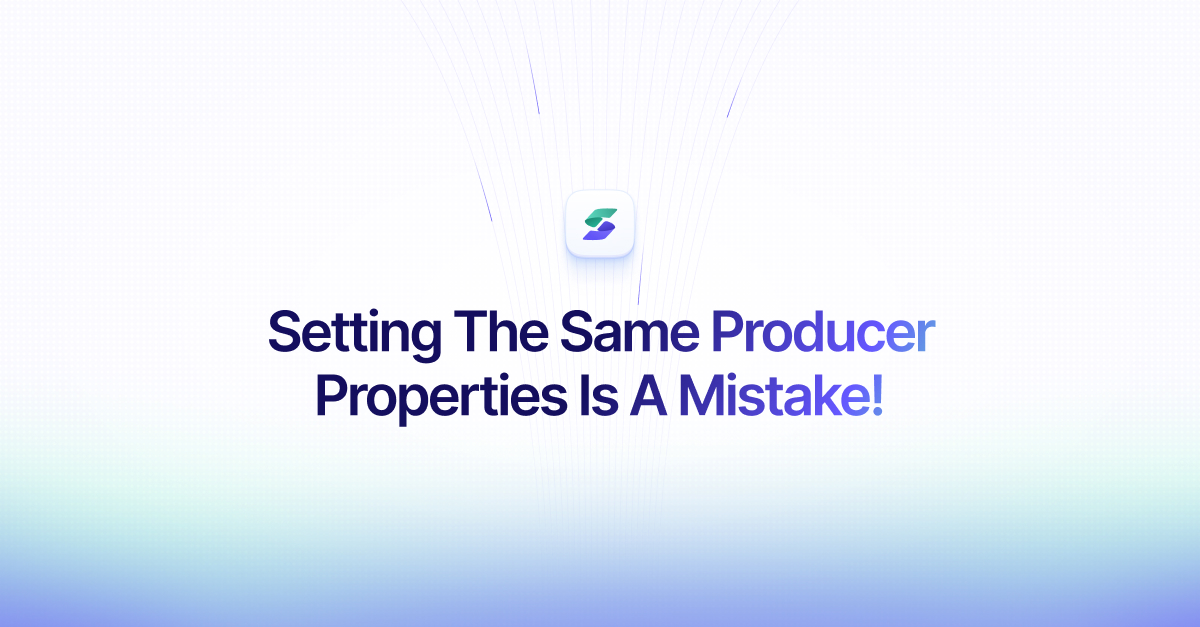Confluent Kafka Cost Optimization: How to Reduce Spend Without Sacrificing Performance
When it comes to managing high-throughput data pipelines, Confluent Cloud is a popular choice for companies that rely on Apache Kafka. But as your data grows, so do your costs. And for tech companies where 40% of the team are engineers working with large datasets, Confluent Kafka cost optimization isn't just nice to have—it's essential.
The problem? Reducing Confluent Kafka pricing isn't as easy as flipping a switch. It requires deep technical insight, long-term usage analysis, forecasting, and scripting. Most engineering teams simply don't have the bandwidth or tooling to get there on their own.
What Drives Confluent Kafka Pricing?
.png)
Understanding what you're actually paying for is the first step toward optimizing Confluent Kafka usage.
Confluent Cloud pricing is typically based on usage metrics like:
- Ingress and Egress Throughput – This refers to the amount of data entering and leaving Kafka. The more data you stream, the more you pay—especially during traffic spikes or high-volume operations.
- Data Retention Periods – Kafka stores messages for a set time before deleting them. Keeping data longer than necessary leads to excessive storage usage and steadily rising costs.
- Number of Partitions – Partitions help Kafka scale, but more isn’t always better. Over-partitioning increases storage, processing load, and infrastructure costs without performance benefits.
- Storage Usage – This is the total volume of data stored across your Kafka topics. Unused or outdated data quickly adds up, driving monthly Confluent Cloud storage fees higher.
- Kafka API Calls and Connect Usage – Every API request and Kafka Connect integration consumes cloud resources. High-frequency usage or unnecessary connectors can significantly inflate your bill over time.
While these pricing factors offer flexibility, they also make it challenging to predict and control costs. Many teams overprovision to avoid outages, retain more data than needed, or fail to realize inefficiencies until the bill arrives—making Confluent Kafka cost reduction a growing priority for scaling organizations.
Why Engineering Teams Struggle with Confluent Kafka Cost Optimization
Optimizing Confluent Kafka spend requires more than just reducing throughput or trimming data retention. Here are the common barriers engineering teams face when working toward Confluent Kafka cost optimization:
- Lack of time: Engineers are focused on shipping features, not tuning infrastructure.
- Risk aversion: Tinkering with Kafka internals can lead to instability or data loss.
- Low visibility: Without granular insights, it’s hard to identify inefficiencies.
- Skill gaps: Kafka performance tuning demands deep system knowledge.
- Tooling complexity: Native tools don’t always provide actionable guidance.
Add it all up, and you’ve got a system that can easily become a black box of spending—highlighting the need for Confluent Kafka cost optimization tools and clear visibility.
Practical Strategies to Improve Kafka Cost Efficiency

When it comes to Confluent Cloud cost optimization, small changes in configuration can lead to significant savings. You don’t need to re-architect your system—just apply the right Confluent Kafka cost optimization strategies consistently.
Below are proven, practical techniques that engineering teams can implement right away to reduce Confluent Cloud cost without compromising performance.
Audit Kafka Topics Regularly
Unused or duplicate topics still consume storage, metadata, and partition resources. Regularly auditing and removing inactive topics is one of the simplest Confluent Kafka cost optimization techniques. Teams often cut 10–20% of their Confluent Cloud cost just by cleaning up unnecessary topics.
Adjust Data Retention Policies
Long retention periods lead to high storage bills, especially for high-throughput topics. Reduce Confluent Kafka costs by aligning retention settings with real business needs—e.g., 1–3 days for logs. Trimming retention on low-priority topics can cut storage usage by up to 30%.
Right-Size Partitions
Too many partitions increase broker load and billing without improving performance. Optimizing Confluent Kafka partition counts based on actual throughput helps lower both compute and storage costs. Teams that fix over-partitioning typically save 10–25%.
Monitor Usage Patterns Continuously
Cost spikes often come from unnoticed usage changes—idle connectors, traffic bursts, or misconfigured topics. Proactive monitoring is key to Confluent Cloud cost optimization and helps prevent 15–40% in avoidable spend.
Adopt Tiered Storage
Standard Kafka storage is expensive for long-term retention. Move cold data to tiered storage to reduce Confluent Cloud cost without losing access. This strategy alone can cut Kafka storage costs by up to 50%.
How Superstream Helps You Reduce Kafka Costs Automatically
.png)
Manually reducing Confluent Kafka costs is time-consuming, risky, and requires deep expertise. That’s where Superstream Kafka Cost Optimization comes in—turning what used to be a complex engineering task into a streamlined, automated process.
Here’s how Superstream helps you optimize Confluent Kafka usage with minimal effort:
- Finds and removes waste
Automatically detects and cleans up zombie topics, idle consumer groups, unnecessary partitions, and stale connections—cutting costs and clutter. - Auto-tunes your clients per workload
Their SuperClient dynamically adjusts Kafka client configurations like compression, batch size, and buffer settings based on real usage patterns—improving efficiency and reducing network overhead. - Aligns your cluster and client configs with best practices
Superstream ensures your deployment is always in sync with proven performance and cost-saving configurations. - Runs continuously in the background
The SuperCluster engine continuously monitors and optimizes your Kafka infrastructure—enforcing policies, scaling resources, and keeping things lean over time.
Users have reported up to 60% reductions in Kafka-related compute and data transfer costs—all without changing application code.
“We cut our Kafka spend by more than half in less than a month. Superstream gave us the insights we didn’t know we needed.”
— Lead Platform Engineer, mid-size SaaS company
If your team doesn’t have time to constantly monitor and tune Kafka infrastructure, Superstream gives you a faster, safer way to get results. Try Superstream Kafka Cost Optimization and make your data pipelines leaner, smarter, and more cost-efficient—automatically.

%20(1).webp)

.jpg)

.webp)